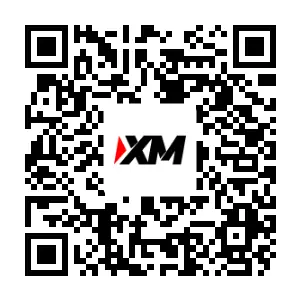What is Futures, Stock Index, Commodities & Stocks?
What are Futures?
Futures trade in contracts. Each is an agreement between two sides. They set a price to buy or sell a good or asset later on.
The quantity of the contract and lot is specified
The date of delivery is also specified
The above are also specified in the contract. These are known & referred to as "specifications"
When this agreement starts, everything is arranged except the opening price (the delivery price is set, which becomes the contract's starting price).
Futures can either be Commodities or Financial Instruments
Commodities - Gold, Silver, Coffee, Wheat, Corn, Soybean, Oil, Natural Gas
Financial/Trading Instruments - Shares, Stocks, Stock Index such as Nikkei, Dow Jones, DAX, FTSE, NASDAQ, S&P, SMI, Euro Stoxx and Cac 40.
Unlike Forex, The Futures market is centralized, these financial trading instruments are traded and transacted in a centralized market, meaning that all trade positions take place in one central market. This also makes the futures trading highly liquid and there is always a buyer or seller willing to buy or sell any contract at any time. Traders also prefer to trade these contracts/lots in the electronic market more than they prefer to buy or sell them in the format of physical goods.
However, many contracts carry expiration dates. Upon a contract's expiration, it is settled, and the underlying physical commodity is delivered to the contract holder. If you are trading the futures contract for a commodity such as coffee, you will physically receive coffee delivered to your location unless you close out your position before the maturity date. To prevent this outcome, most brokers automatically liquidate all contracts prior to the delivery date, ensuring that traders retain their capital instead of accepting physical goods.
How Futures Work?
Consider a scenario where a wheat processor contracts with a farmer who is planting wheat, agreeing that in three or four months, upon harvest, the processor will purchase the wheat at a fixed price, say $1,000 per 1 contract specification. Over the following three months, these futures contracts are actively traded. If, by the delivery date at the end of three months, the market price settles at $900 per contract, the farmer still receives the agreed-upon $1,000. In this case, you, the trader, must cover the $100 difference, resulting in a loss. Conversely, if the value of the wheat future contract rises to $1,200 by that time, the farmer still receives $1,000, while you realize a profit of $200 from this position.
Consequently, the farmer is guaranteed a payment of $1,000 per contract specification after a three-month period, regardless of whether the prevailing market price for wheat increases or decreases during that duration.
However, a futures contract will be traded by many traders within these three months, and most traders will guess by trading a contract and keeping it for a period ranging from minutes, hours, days, or even weeks. A trader will guess whether it will go up or down, so they can make money.
This implies that futures contracts undergo daily evaluation, and the resultant gains or deficits realized on that particular day are credited to the investor currently holding the contract.
How to Trade
Like foreign exchange, the futures market also uses borrowed money. So instead of using $10,000 to buy shares like in the stock market, you can trade those shares in the futures market and buy, for example, five times the amount of your money if you use a borrowing option of five times. This makes the futures market more appealing because of the borrowing option, as traders can trade more using the chance to trade with borrowed money.
Futures market contracts also have a time limit, and after that time, you can't trade that thing anymore because after that date, the contracts are settled, and the real goods that are named in the contract are delivered.
Commodities
The most readily accessible futures in Platforms that can be traded and transacted in the exchange market via numerous Forex brokers include Oil, Silver, and XAUUSD.
Indices
E-mini futures contracts are accessible for electronic trading mechanisms. These eminis are highly favored due to their robust liquidity and the associated leverage options available for speculation. Indices within the financial markets can be traded and settled as futures lots: the index is rendered visually as a chart, which is then traded as a financial instrument. (E-minis constitute smaller contract sizes compared to Maxi futures lots: Maxis are exclusively traded by floor brokers and are not available for online execution, whereas e-minis are specifically engineered for electronic trading via online platforms. An e-mini contract moves the equivalent of $50 per point, whereas Maxi Contracts move $250 per point.)
E - minis are therefore the most regular type provided trading by most brokers as the eminis are designed for computer electronic trading.
Common examples encountered include: Nikkei, Dow Jones, DAX, FTSE, NASDAQ, S&P, SMI, Euro Stoxx, and Cac 40.
Get More Topics and Tutorials:
- How to Interpret/Analyze Trade Fibo Expansion MetaTrader 4 Technical Indicator
- How Do I Analyze Piercing Line Candlesticks?
- How to Set Money Flow Index XAUUSD Indicator in a Chart in MetaTrader 4 Platform Software
- How to Get MT4 USD DKK Chart
- How Can I Find MetaTrader 4 S and P AS51 Index Chart?
- List of Forums for Gold Traders
- How to Use MetaTrader 5 Bollinger Band Fib Ratios Indicator on MetaTrader 5 Software
- Gold Systems Example and Gold Plan Example

